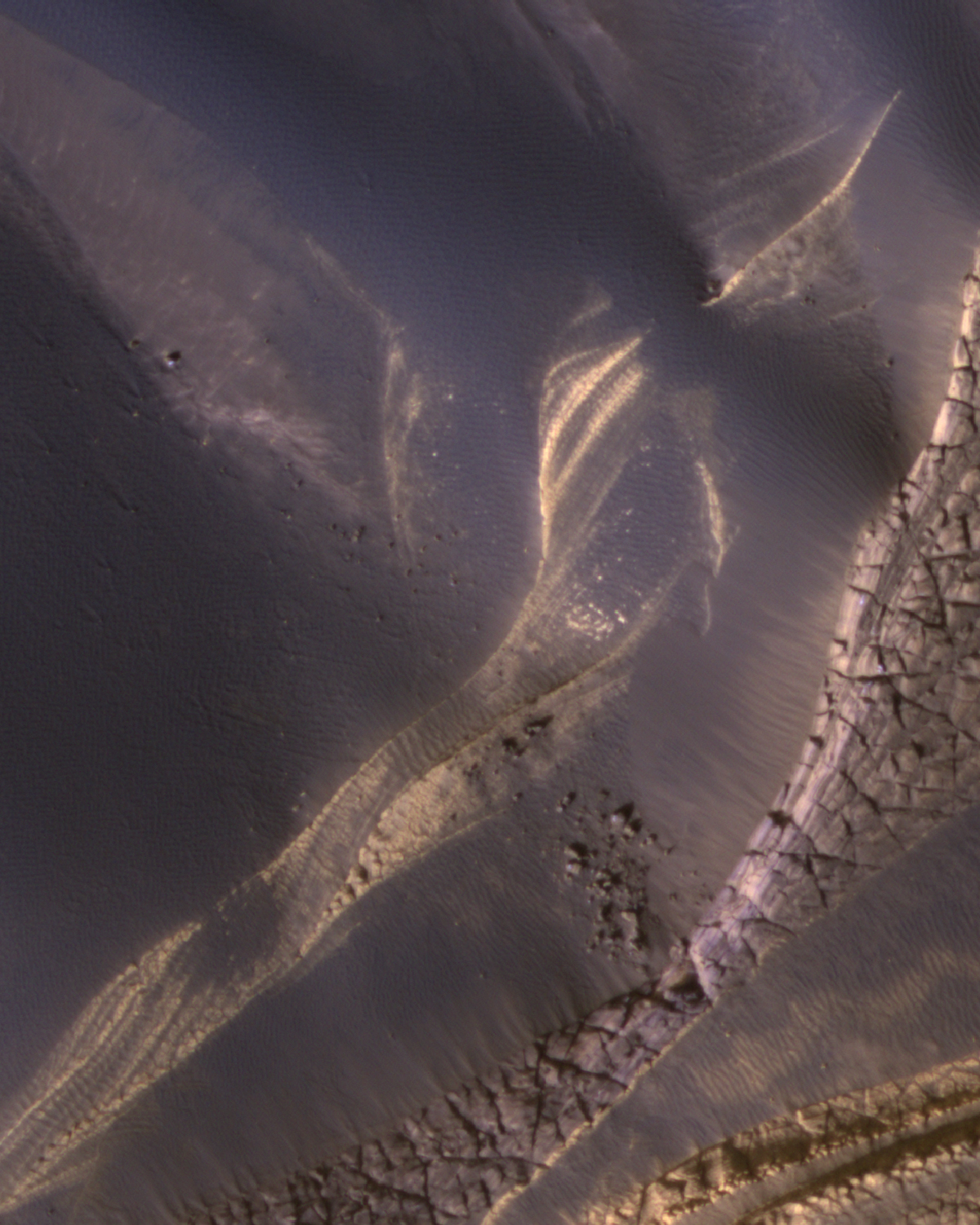Swirly rocks

Whither the wind
June 13, 2014
In the lee
June 24, 2014 A piece of Mars: Never mind the 4 m (13 ft) boulders that have fallen downslope, or the rippled sandy surfaces here. Look at those bright swirls in the ground. Those are the former interiors of sand dunes, which were trapped and incorporated into the bedrock (like dinosaur bones, but without so much rawr). The wind has been blowing sand around on Mars for a long, long time. (HiRISE ESP_036436_2645, NASA/JPL/Univ. of Arizona)
A piece of Mars: Never mind the 4 m (13 ft) boulders that have fallen downslope, or the rippled sandy surfaces here. Look at those bright swirls in the ground. Those are the former interiors of sand dunes, which were trapped and incorporated into the bedrock (like dinosaur bones, but without so much rawr). The wind has been blowing sand around on Mars for a long, long time. (HiRISE ESP_036436_2645, NASA/JPL/Univ. of Arizona)




2 Comments
Neat! Lori, how were the darker criss-crossed an raised (mosaic looking) rocky features formed on what I think is the front slope of the old dunes? Are they wind blown erosion’s??
William
Those are probably fractures, or joints, like these. Big spans of bedrock are usually under stress, from tectonics (on Earth) or gravity, and to handle the stress they tend to break in particular ways. This is near the north pole, so there’s a lot of temperature changes, both from day to night and from season to season, and that can also put stress on a rock. It’s actually a testament to the strength of the bedrock that it breaks — these rocks are probably not much more than sand, dust, and ice, but yet they can fracture like rock and even break into boulders. That wouldn’t happen if the sediment weren’t compacted and cemented into fairly competent material.